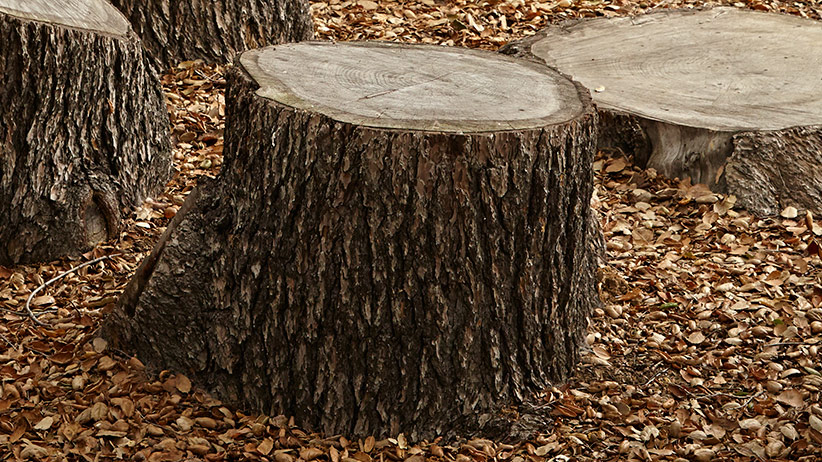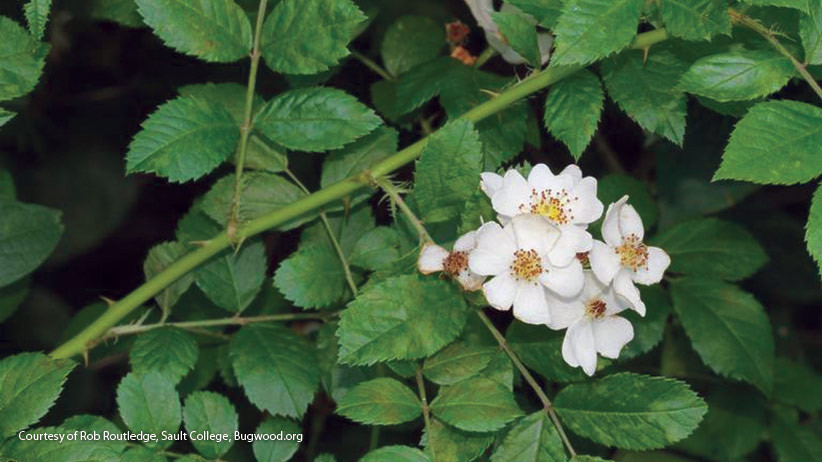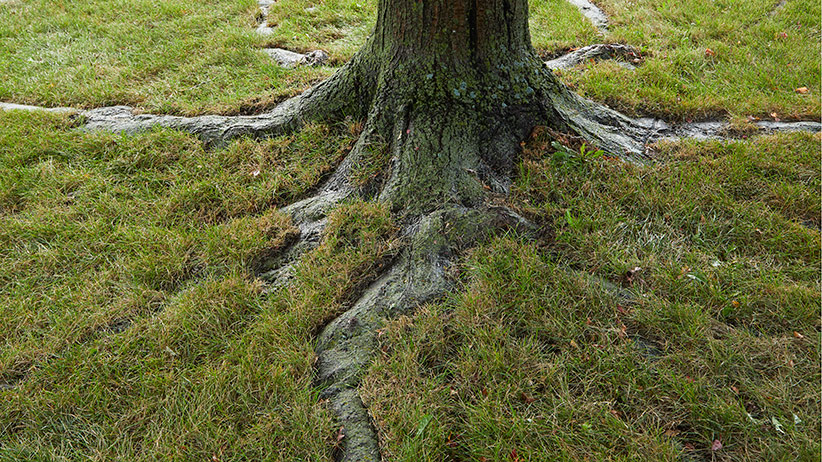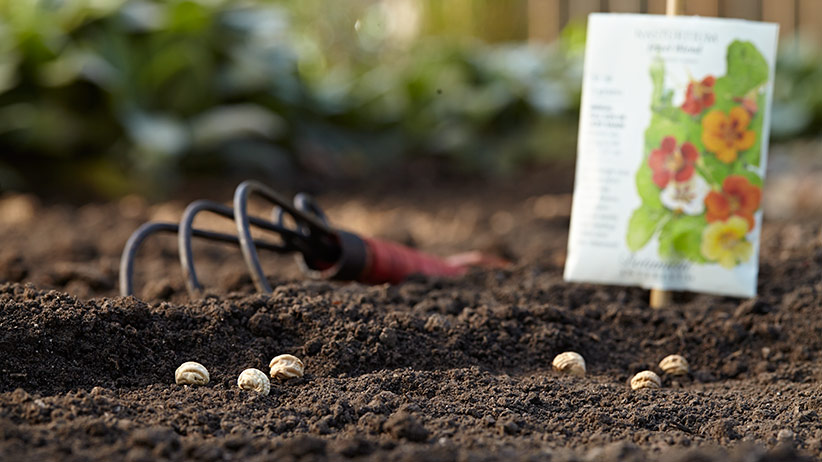
These seed-starting tips make a difference
Preparing for an upcoming growing season usually means a bit of planning and planting. Starting seeds allows you to save money and still get exactly what you need. And when you start your own plants, you can carefully follow their healthy development. But it doesn’t have to be a lot of work. Our readers have shared their favorite tips for saving time, effort and money when starting seeds. Check them out below!
You Might Also Like:
How to sow seeds outdoors
The best heirloom tomatoes for your garden
How to prechill seeds
How to start seeds outdoors in winter

Make your own seed tapes
Save yourself time and work in spring by preparing your seeds for planting in winter, like Sandie Bloms of North Dakota. She makes seed tapes. This may sound like a lot of effort on the front end, but these handy strips are actually the perfect way to satisfy garden cravings in long winter months.
Want to get children involved or interested in gardening? Let them start sticking seeds or use corresponding colored markers to mark bloom hue!
How to make seed tapes
- Cut strips of thick paper towel 1 in. wide and as long as your garden rows. Then make a paste of equal parts flour and water and dab drops along at the seed’s recommended spacing.
- Place a seed in each drop, like in the photo above, and let the paste dry.
- Roll up the strips and store them in a cool, dry place until planting time in spring.
- Then roll out your tapes, cover them with soil according to the packet and water in. The paper towels end up decomposing in the ground.

Use empty spice jars for seed storage
Beryl Dix from Michigan saves empty spice jars for seed storage. She cleans out the shakers, pours in seed and shakes them over the ground when it’s time to plant. Empty salt and pepper shakers, too.
Create a custom seed mix
For a prairie-type planting, mix a variety of seeds together in a larger shaker, like one for grated cheese. But make sure your combo shares similar germination and cultural requirements.
Planting tip
Beryl scratches the surface of the ground before pouring out the shaker, sifting a layer of soil over the seeds to finish. As seedlings appear, remember that some will need to be thinned.
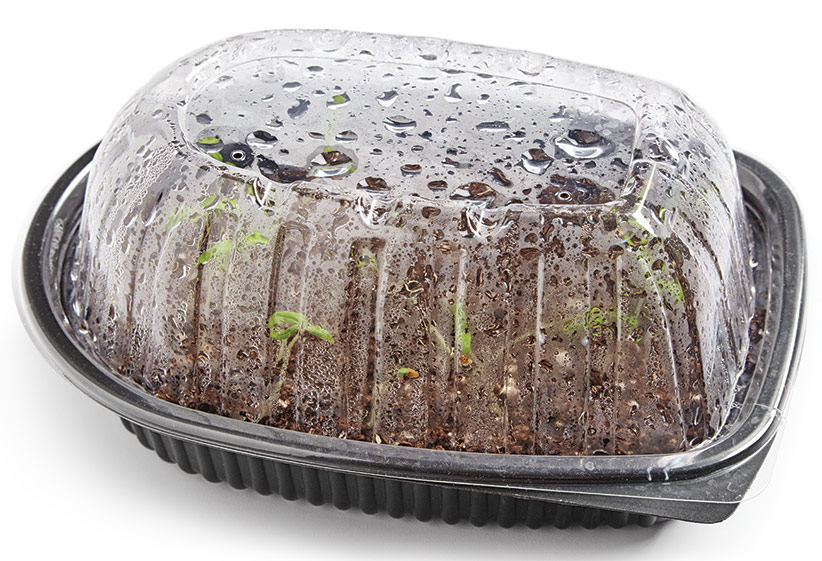
Upcycle carry-out containers into seed starters
You don’t have to spend a lot on seed starting supplies. Tamara Westphal of New York cleans out and reuses the plastic carrying containers she buys rotisserie chicken in.
Poke a few holes in the bottom for drainage and spread a layer of moistened seed-starting mix. Plant your seeds according to the directions on the packet, sprinkle water over the top and snap on the cover.
Tamara finds she doesn’t need to water too often because condensation collects on the lid, like you see above, and trickles down onto the mix. Her recycled seed pans fit in the windowsill, with a tray underneath. You could also place them under a grow light. Once seedlings develop a second set of leaves, you know it’s time to transplant them into larger pots.
Extend the growing season with an extension ladder
Putting out flats of seedlings in the spring can be a gamble. The weather might unexpectedly turn frosty, or rabbits and other pests could get to them. But it’s hard to justify a permanent seed-starting structure when you only need it a few weeks out of the year.
So Royce Hanes from New Jersey uses his metal extension ladder to make temporary seedling benches in spring. He separates the sections of the ladder and supports each of the extensions across stacks of four concrete blocks.
The seedling flats fit perfectly between the ladder’s rails, and the rungs support the centers of the flats. Drainage is no problem because the flats are held off the ground. This elevation keeps the rabbits away from the tender growth, too.
To protect plants from wind and insects, Royce covers the plants with floating row cover fabric long enough to hang to the ground. After the seedlings are all transplanted, he reassembles the ladder and stores it away, so there’s no greenhouse or large coldframe taking up space in the garden.
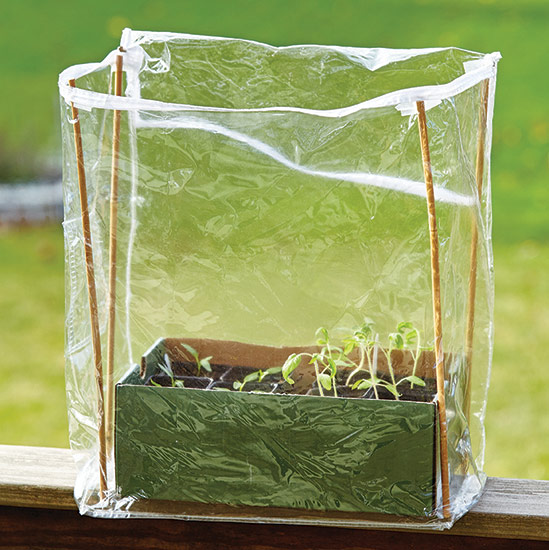
Make a plastic storage bag into a greenhouse
Sally Turner of Vermont only starts a few plants from seed each year. So she uses a big zippered, plastic storage bag — the kind bedspreads are sold in — as a temporary greenhouse.
To reinforce the bottom of the comforter bag and keep the plastic flats of seedlings upright, Sally puts them in a cardboard tissue or shoe box with the top cut off. Then she sticks short bamboo stakes into the corners to hold the plastic upright, like you see in the photo above.
You Might Also Like:
Clever garden tool tips
7 ways to upcycle plastic bottles in the garden
Upcycled design ideas for your garden
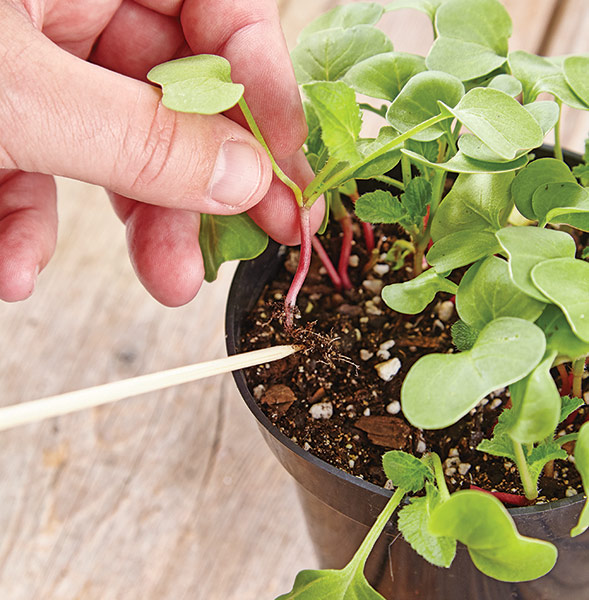
Help handling seedlings
Thinning and transplanting seedlings can be tedious, delicate work. For help with the job, Rita Bedford of Washington uses bamboo skewers. They’re especially useful when it comes to gently prying seedlings out of mix and repotting. The skewer’s narrow, pointed tip works well to gently tease out roots.
- When handling seedlings, hold them by their first set of leaves, rather than at the stems. At this tender stage, stems can be easily bruised or broken. Using the skewer to support the roots will keep leaves from tearing off.
- Try to replant each seedling quickly as you move it. Even a short time out of soil can dry roots and ultimately slow down growth.
- After you water, some of the starts may fall over and lay on the soil. The skewer makes a good tool for carefully lifting each plant and holding it upright.
- Then, a second skewer comes in handy for firming the soil at the base of the plant so the seedling will stand upright and roots can take hold.
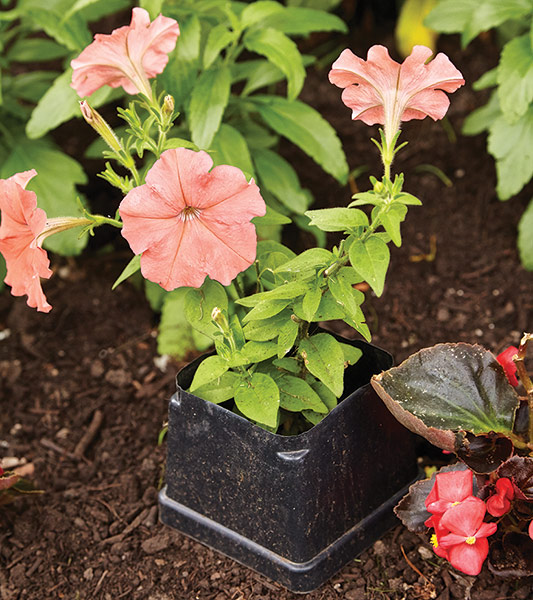
Protect new plants with upcycled nursery pots
Because they’re too tiny and fragile to fend for themselves, seeds sown directly into the soil can use a little protection. Jan Peak from Georgia cuts the bottom off small plastic nursery pots, making rings 3 or 4 in. wide, to push into the soil and sow seeds inside. This shields small new growth and helps you keep track of where you planted, since some seeds can be slow to germinate.
Linda Blythe of New York uses these nursery-pot collars as a barrier on new plants to protect tender new growth from nibbling critters. This gives seedlings and transplants the chance to get established in their new spot. When plants have reached several inches tall, simply lift off the ring.










